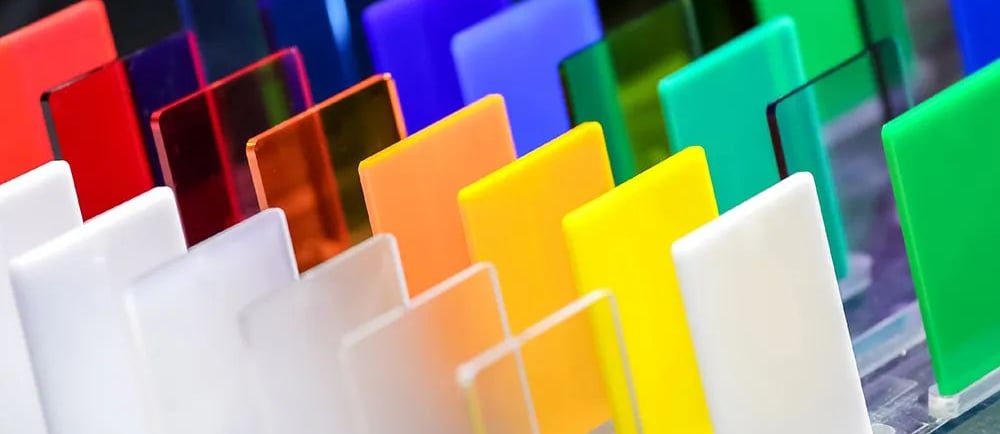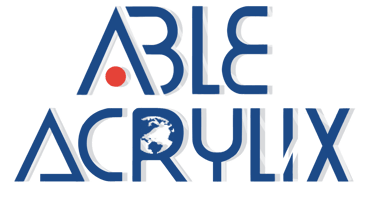

What’s the primary differences between cast acrylic sheets and extruded acrylic sheets?
The differences lie in their manufacturing processes, molecular structure and resulting physical properties. Below is the detailed comparison.
Cast acrylic sheets are produced by curing liquid monomer in molds, resulting in slow cooling that yields higher molecular weight. This enables thicknesses exceeding 10cm while delivering superior impact resistance, UV stability, and chemical resistance. Their harder surface withstands scratching and they thermoform without warping or bubbling, making them ideal for aquariums, aircraft windows, and outdoor signage. However, they cost 30-50% more than extruded alternatives. Extruded acrylic sheets formed by melting and forcing PMMA pellets through a die, cool rapidly with lower molecular weight. Limited to 1.3cm thickness, they are softer and prone to stress-cracking. While less UV-stable and more vulnerable to solvents, they machine faster and cost less. These suit cost-sensitive applications like light diffusers, protective barriers and indoor displays.
Select cast for critical durability/complex shapes; choose extruded for budget/thin-sheet precision.
铸造亚克力板采用液态单体模具固化工艺,缓慢冷却形成更高分子量结构。其厚度可达10cm以上,具备卓越的抗冲击性、耐紫外线性和耐化学腐蚀性。表面硬度更高,热成型时不变形不起泡,适用于水族箱、飞机舷窗及户外标识等场景,但成本比挤压板高30%-50%。
挤压亚克力板通过熔化PMMA颗粒挤压成型,快速冷却导致分子量较低。最大厚度仅1.3cm,材质较软且易应力开裂。虽然耐候性和耐溶剂性较弱,但加工效率更高且成本更低,适用于导光板、防护隔板及室内展架等成本敏感型项目。
总之:高耐久/复杂造型选择铸造板
预算控制/薄板精度选择挤压板
The primary differences between cast acrylic sheets and extruded acrylic sheets
Cast acrylic sheets and extruded acrylic sheets comparison: The differences lie in their manufacturing processes, molecular structure and resulting physical properties. Below is the detailed comparison. Cast acrylic sheets are produced by curing liquid monomer in molds, resulting in slow cooling that yields higher molecular weight. This enables thicknesses exceeding 10cm while delivering superior impact resistance, UV stability, and chemical resistance. Their harder surface withstands scratching and they thermoform without warping or bubbling, making them ideal for aquariums, aircraft windows, and outdoor signage. However, they cost 30-50% more than extruded alternatives. Extruded acrylic sheets formed by melting and forcing PMMA pellets through a die, cool rapidly with lower molecular weight. Limited to 1.3cm thickness, they are softer and prone to stress-cracking. While less UV-stable and more vulnerable to solvents, they machine faster and cost less. These suit cost-sensitive applications like light diffusers, protective barriers and indoor displays. Select cast for critical durability/complex shapes; choose extruded for budget/thin-sheet precision. 铸造亚克力板采用液态单体模具固化工艺,缓慢冷却形成更高分子量结构。其厚度可达10cm以上,具备卓越的抗冲击性、耐紫外线性和耐化学腐蚀性。表面硬度更高,热成型时不变形不起泡,适用于水族箱、飞机舷窗及户外标识等场景,但成本比挤压板高30%-50%。 挤压亚克力板通过熔化PMMA颗粒挤压成型,快速冷却导致分子量较低。最大厚度仅1.3cm,材质较软且易应力开裂。虽然耐候性和耐溶剂性较弱,但加工效率更高且成本更低,适用于导光板、防护隔板及室内展架等成本敏感型项目。 总之:高耐久/复杂造型选择铸造板 预算控制/薄板精度选择挤压板
